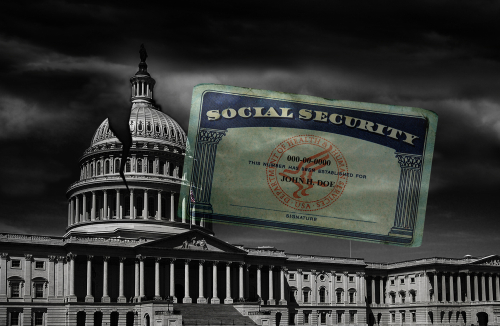The third rail of American politics isn’t what it should be, according to Republican Senator Bill Cassidy of Louisiana.
“We have to redefine what that third rail is,” Cassidy said when asked about prospects for a Social Security fix. “The third rail, according to our leading presidential candidates, is that you pretend that nothing’s wrong with Social Security. The third rail should be that we’re going to have the 24% decrease without a borrowing capacity to address it. If that 24% decrease goes into effect, it’ll double the rate of poverty among the elderly. That should be the third rail.”
Joined by Bipartisan Policy Center Vice President and Chief Economist Jason Fichtner, Tuesday’s “fireside chat” focused on the Social Security Trust Fund’s rapidly approaching reserve depletion date.
Stephen Goss, the Social Security Administration’s Chief Actuary, set the stage with a litany of concerns about how the popular government program is trending. He reiterated that the latest Trustees’ Report shows the reserve depletion dates for the primary Old-Age & Survivors Insurance Trust Fund will occur one year earlier in 2033 versus 2034. The combined OASSI and DI Trust fund depletion will also occur one year earlier in 2034.
But why, he rhetorically asked?
“The reason is that in December, the trustees reassessed their outlook for the future economy and foresaw some slowdown in the economy in 2023," Goss said. "They expect that the level of GDP and labor productivity would be lower by about 3% throughout the projection period compared to last year’s report. While we’ve been very stable in what we’ve projected for the reserve depletion, we’re getting closer to it. So, it’s time to be thinking seriously about action.”
That action came in the form of Cassidy’s idea, which he’s worked on with a bipartisan group of senators, and Angus King, an independent who caucuses with Democrats.
“The big idea would create an investment fund separate from Social Security, and allow this investment fund to accrue returns, if you will, over 70 years, keeping it in escrow,” Cassidy said. “By doing so, we would end up with a corpus enough to address 75% of the 75-year shortfall, assuming that we did give the authority to borrow to pay scheduled benefits. We think it’s a really good start on a solution. Now we need leading presidential candidates to step to the plate, be honest with the American people, and help us find the additional 25%.”
Fichtner pushed back, noting that the solvency is not a new issue and one known for some time. Congress is great at kicking the can down the road. Why can something be done now?
“If you’re going to say that nothing happens in D.C. without a deadline, of course, history will bear that up,” Cassidy said. “I would argue, though, that there’s a semi-deadline now. If we wait until just before the trust fund goes insolvent, it will be much more difficult to address the issue.”
He referenced changes made to the program in 1983, when it was just months away from insolvency.
“A fundamental difference between now and 1983 is that insolvency then would only cause about a 5% [reduction], if I recall correctly, a very minor amount of decreased payments to beneficiaries,” Cassidy concluded. “Now we have a 24% cliff. The deficit that we have to overcome on an ongoing basis is greater now. I would argue that the window of opportunity to do it with minimal disruption is rapidly closing.”

